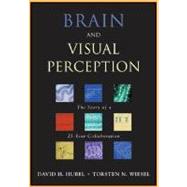
Note: Supplemental materials are not guaranteed with Rental or Used book purchases.
Purchase Benefits
What is included with this book?
| Introduction and Biographies | |
| David H. Hubel | p. 5 |
| Torsten N. Wiesel | p. 25 |
| Background to Our Research | |
| Cortical Neurophysiology in the 1950s | p. 37 |
| The Group at Hopkins | p. 41 |
| The Move from Hopkins to Harvard | p. 48 |
| The New Department | p. 53 |
| Normal Physiology and Anatomy | |
| Our First Paper, on Cat Cortex, 1959 | p. 59 |
| Recordings from Fibers in the Monkey Optic Nerve | p. 83 |
| Recording from Cells in the Cat Lateral Geniculate | p. 91 |
| Our Major Paper on Cat Striate Cortex, 1962 | p. 104 |
| Recordings from Cat Prestriate Areas, 18 and 19 | p. 141 |
| Survey of the Monkey Lateral Geniculate Body-A Foray into Color | p. 193 |
| Recording Fibers in the Cat Corpus Callosum | p. 231 |
| Recordings in Monkey Striate Cortex, 1968 | p. 244 |
| Another Visual Representation, the Cat Clare-Bishop Area | p. 273 |
| Encoding of Binocular Depth in a Cortical Area in the Monkey | p. 282 |
| Anatomy of the Geniculo-Cortical Pathway: The Nauta Method | p. 286 |
| Ocular Dominance Columns Revealed by Autoradiography | p. 317 |
| Regular Sequences of Orientation Shifts in Monkeys | p. 325 |
| Cortical Modules and Magnification in Monkeys | p. 354 |
| Deprivation and Development | |
| The First Three Kitten Deprivation Papers | p. 369 |
| Second Group of Deprivation Papers | p. 404 |
| The Siamese Cat | p. 455 |
| Cells Grouped in Orientation Columns in Newborn Monkeys | p. 480 |
| Plasticity and Development of Monkey Ocular Dominance Columns | p. 493 |
| Three Reviews | |
| Ferrier Lecture, 1977 | p. 595 |
| Nobel Lecture, David H. Hubel; Nobel Lecture, Torsten N. Wiesel | p. 657 |
| Epilogue: Summing Up | p. 705 |
| List of Papers Included | p. 711 |
| Glossary | p. 713 |
| Acknowledgments | p. 721 |
| Today, Forty-Six Years After Starting | p. 723 |
| Index | p. 725 |
| Table of Contents provided by Rittenhouse. All Rights Reserved. |
The New copy of this book will include any supplemental materials advertised. Please check the title of the book to determine if it should include any access cards, study guides, lab manuals, CDs, etc.
The Used, Rental and eBook copies of this book are not guaranteed to include any supplemental materials. Typically, only the book itself is included. This is true even if the title states it includes any access cards, study guides, lab manuals, CDs, etc.